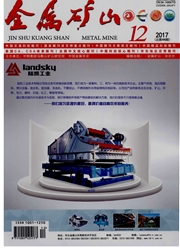

 中文摘要:
中文摘要:
为揭示机械活化对铁氧化物气基还原的影响机理,探讨了铁氧化物气基还原热力学与铁氧化物机械力储能之间的关系。结果表明:机械活化铁氧化物的每个气基还原反应都存在一个特征临界CO或H2压力分数,只有在还原所需最低CO或H2压力分数高于其特征临界压力分数时还原温度才随储能的增加而降低,反之则还原温度随储能的增加而升高,这使得机械活化仅对降低某些铁氧化物气基还原反应的温度有利而对降低其他铁氧化物气基还原反应的温度反而不利。另一方面,铁氧化物气基还原所需最低CO或H2压力分数都随储能的增加而减小,因此机械活化对提高所有铁氧化物气基还原反应的还原气利用率均有利。
 英文摘要:
英文摘要:
For the purpose of revealing the impacting mechanism of mechanical activation on the gas based reduction of iron oxides, the correlation between the gas based reduction thermodynamics and stored energy acquired through mechanical activation for iron oxides is discussed. The result shows that there is a characteristic threshold CO or H2 pressure fraction for each iron oxide reduction. If only the minimum CO or H2 pressure fraction for reduction higher than the threshold value, reduction temperature decreases with the increase of stored energy, otherwise, increases, which renders the mechanical activation for iron oxides is advantageous only to some gas based reductions, while disadvantageous to others, in terms of lowering the reaction temperature. However, the minimum CO pressure fraction of CO or H2 for all reductions decreases with the increase of stored energy, which makes mechanical activation be advantageous to all the reductions in improving the gas utilization ratio.
 同期刊论文项目
同期刊论文项目
 同项目期刊论文
同项目期刊论文
 期刊信息
期刊信息
